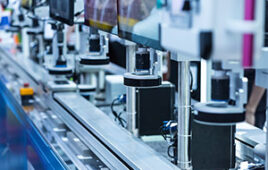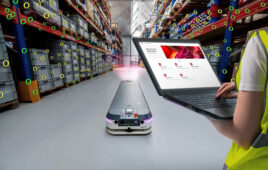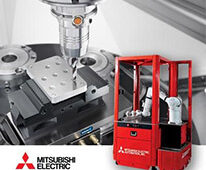The Obama administration has enacted sweeping changes in the way it helps industry, providing a palette of stimulus programs and taxation changes. Together, they’re expected to help the industrial world bounce back, improving efficiency by using advanced equipment.

A primary goal of the $787 billion economic stimulus act, formally known as the American Recovery and Reinvestment Act of 2009, is to spark employment with projects that rebuild or expand America’s infrastructure. Government investments that help states and cities rebuild highways, bridges, and buildings will all require a lot of heavy equipment, as will many other government-funded work projects.
Many observers feel that the promise of this spending alone will help spark improvements in the economy, with solid growth coming next year when spending takes greater effect. The Manufacturers Alliance/MAPI U.S. forecasts a 2% increase in manufacturing production in 2010. That will be welcome after 2009, when MAPI expects manufacturing production to fall 12%.

If the turnaround comes as anticipated next year, it will be fairly broad based. MAPI expects 17 of 24 industries to expand. Government spending, along with the decline in oil prices from their high, is a key factor in that growth. While the huge stimulus bill gets most of the spotlight, factories and industrial facilities will also benefit from some enhanced tax deductions. These incentives apply to all companies, whether they get stimulus funding or not. To get the tax deductions, companies only need to upgrade their equipment or add new machines.
Section 179 deductions have been increased so the full expense of new equipment acquisitions in 2009 is $250,000 and first year depreciation has risen to 50%. Under this version of the Section 179 regulation, a company buying equipment worth $750,000 could fully expense the first $250,000, then take half of the remaining $500,000 for a total deduction of $500,000. The first year of the Modified Accelerated Cost Recovery System (MACRS) can be added to boost this figure to $535,000.*
The remaining $215,000 could be depreciated on a normal seven-year cycle. These deductions apply to used as well as new equipment. However, companies will have to act fast to take advantage of this enhanced Section 179 program. The bonus will expire at the end of 2009. Companies also need to understand that the increase in deductions isn’t unlimited. Total purchases that exceed $1,050,000 can be included in Section 179 filings.*
A potentially greater impact on the equipment market will come from the stimulus act. The companies that get the government funding will get some sizable sums. That’s expected to drive a significant amount of spending.
Though one aspect of the funding is to boost employment, an equally important driver is to make American businesses competitive. That goal will be met in part when companies acquire equipment that can help them boost their efficiency.
Transportation is one of the main recipients, getting nearly $50 billion. More than half the funding, $27 billion, is going to states so they can repair or build highways and bridges. Another $18 billion will go to rail projects and public transportation.
The road and rail construction will spark demand for mobile equipment, which should prompt manufacturers like Cat and Deere to beef up their production lines. At the same time, the increased demand for concrete and steel will boost equipment purchases, as will the construction of rail cars and the related control equipment.
Support for Detroit automakers should also help the industrial equipment market rebound. The auto industry has always been the leading market for robots and other types of equipment. The billions given to GM and Chrysler certainly won’t hurt those industries.
Though many production plants have been closed, the drive to trim costs and build cars with fewer workers is likely to drive the continued adoption of leading edge equipment. As GM and Chrysler invest some of the billions they received from the government in robots and other equipment, their competitors are joining in an “arms race” that centers on robotic arms.
Funding for the energy market is also expected to bring a major trickle down benefit to the industrial equipment industry. An expansive array of energy generation and conservation programs is getting a total of $50 million. Buildings from schools to public housing to military facilities are all going to be buying furnaces, windows and other energy efficient equipment.
At the same time, there will be a huge push to build wind and solar power facilities and other renewable energy plants. The green energy effort includes $11 billion to upgrade the nation’s antiquated power grid. These efforts all involve a hefty electronic segment, as well as construction projects that will further fuel demand for heavy equipment.
There’s also a big investment in improving the nation’s water supply and cleaning up the associated wastewater. $6.0 billion is provided for programs that improve the quality of drinking water and for wastewater treatment projects. Automated controls, large pumps and building construction are expected to see a lot of spending as these projects evolve.
While many observers focus on the stimulus alone, others note that the increased spending will augment an expanded federal budget. It will surpass $3 trillion next year, providing a number of programs that will continue to benefit equipment manufacturers and their customers. They also note that the reduction in spending by industry appears to have bottomed out, heralding the potential for more expansion.
For more information on the ER-679, MAPI U.S. Industrial Outlook: The Great Recession, please click here. (Please note that the 21-page report costs $50 for non-members).
* Disclaimer: Information provided about Section 179 is for informational purposes only. Prior to making any equipment investment decisions, readers should consult with their accounting and tax professionals.
::Design World::
Filed Under: Factory automation, AUTOMATION





Tell Us What You Think!